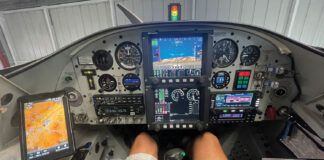I get letters. Letters with great questions, most with compliments, some with other sorts of, shall we say, opinions. But most interesting, there are tool-and-die makers reading my humble efforts at Metal Shop 101, and theyve made some great suggestions that are worth passing on. I also want to say, before we go too much further, that I and my editors are gratified by the response to this series and the dialogue that has emerged.
Projects
Frank Weiss suggested that a couple of good projects would be to build a self-centering drill press jig and/or a drill press vise. He pointed out that he made these when he was in high school. I rather expect that Weiss high school shop was a lot better equipped than todays. I had access to lathes, mills, shapers, welding and even basic foundry. The bad news is that the average reader is fortunate to have a mill and lathe, so this is a bit over the top. The good news is that if you do have these tools, you could do it.
The better news is that, per Weiss letter, both of these are available through Northerntool.com. Better still, if you don’t have the mill and lathe, you likely have a drill press, and both of these are essential. The drill press jig is an excellent tool for drilling a hole through the centerline of a tube. Youll need a couple of clamps to hold it place, so be sure to buy those as well.
Computer Control
I heard from a couple of you asking about upgrading to computerized numerical control. I would love to get into CNC, but for the foreseeable future this will have to be limited to HDC (human digital control).
But thats what the Internet is for. Visit www.cnczone.com, a good community of young fogeys (as opposed to old) who can help. Those guys are always rattling on about building their own CNC machine out of sticks and rocks.
Accessories
Alan Reich wrote, So thank you for your series and thank you for getting me off of my duff and get going.
Now, thats what I call a measure of success! Reich bought a three-in-one to use in building a modified Wittman Buttercup and wrote to say that his experience in purchasing the mill/lathe was as I described: One should expect the quality and usefulness to be proportional to the cost.
He went on to say, I am so glad I got the stand with it. I suggest that you tell your readers that the stand must be the first thing they get if they do not have a real solid place to put their new tool.
Ill say again: Don’t put 700 pounds of machine tools on a wooden bench. Itll shake, and even if the weight doesn’t collapse the bench, the instability will interfere with accuracy by allowing the lathe bed to twist.
Heres another acronym: DRO (digital read out). Its an accessory you can put on the machine that shows the position of the cutting tool in, well, digits on a flat-panel display. It makes resetting to zero easy, the numbers are easy to read and it looks cool. Does it help? Not if the machine itself is not stable and all of the tolerances are sub optimum.
I would suggest that you budget money for improvements. At the top of my list would be a set of good bearings for all of the moving parts. They will improve your work, the machine will sound better, and the pride of ownership will pay you back enormously.
Several of you were interested in the quick-change tool post I use. Its from Enco (www.use-enco.com). Go there, do a search for Part #505-2253 or Page 366.
Cleaners
It matters not how good an idea you have, someone has a better one. I haven’t tried this suggestion from Ted Edwards, but I will:
Over the years I have tried many cutting fluids including the Tap Magic you recommended. Some years ago a very knowledgeable machinist recommended using d-limonene, the active ingredient in citrus cleaners, on aluminum and its alloys. The 100% stuff is not the easiest to get ahold of, but I tried the most concentrated citrus cleaner I could find. Boy, does it work! As Im sure you know, the ultimate tests are tapping and drilling small diameter but deep holes in such material. I wouldn’t even consider using anything else for those tasks. It also works very well to keep the teeth on my bandsaw from clogging up when cutting aluminum stock.
Another reader took me to task for suggesting the use of disposable lathe bits. He pointed out that a greenstone wheel would sharpen up a dull bit. But it will also take up bench space, be used once a month, and it requires its own skill set. Ill stand by my recommendation on that one.
Routers on Aluminum
In the March 2008 issue I described using a router to cut sheet aluminum. Id done it once before on my RV-6 with very good results, but this time I was having not much success cutting the instrument panel for the Jabiru. I had a comparison of several methods, but on this project the panel material was quite a bit thicker at 0.090 inches, where the RV-6 skin could be cut with hand shears. Rawson Mordhurst wrote in response to my less-than-stellar results.
I worked for a major aircraft company for 14 years. Routers are used to trim the ends of fuselage sections and the passenger door openings.
There was a story in the factory that a mechanic whose job was to trim the passenger door opening [had] retired. The fellow who took over the job using the same tools couldn’t get the door to fit, so they called the man who had done the job out of retirement. Sure enough, it was kind of a body English thing, a learned process. Just because the router was guided by tooling didn’t necessarily get everything just right. Once everything was sorted out, the surface trimmed by the router was finished…and did not require further work.
Now, if I were a thin-skinned sort, I might take umbrage at body English, as its a euphemism for skill. Skill it is, so practice on the cheap stuff and get better at it. Clint Corbin chimed in with a suggestion that a tooling improvement might help.
The cut example you showed is exactly like an issue I used to have when cutting thicker acrylic sheets when using a straight cut bit. It leaves a very rough edge and is very hard to hold against the router guide. The result is generally not that usable.
This all changed for me when I purchased an eighth-inch spiral up-cut solid carbide router bit for a special project. If you look at that bit, you will notice that it is built exactly like the many end mills you have. Because of the slicing action of the spiral bit (versus the chopping action of a straight bit), you get a much cleaner cut, and the bit is much easier to guide. The force you must use on the router to move it through the material is also greatly reduced.
The original eighth-inch straight bit lasted for approximately [missing number] linear feet of cutting one quarter inch deep in MDF (medium density fiberboard) before it broke. The replacement spiral up-cut solid carbide bit has cut over 100 linear feet of MDF and an unknown amount of acrylic as well. It is an all-around superior bit that will give you very superior results.
Corbin went on to describe an improvement to the guide I used. Rather than shifting ones concentration from a guide board running against the outer edge of the router frame, this puts a tube close around the router bit, and you keep your eyes on the cut. Sounds like a good idea.
Buck Postlewait suggested simply using a router with a larger diameter shank, which seems plausible. So different bits with larger shanks running against a different guide. That sounds like a fix to me.
Which Machine to Buy
I cant bring myself to unequivocally endorse a particular machine. Id love to have a stream of trucks come to the shop door on a monthly basis dropping off new toys for a road test.
The only metric I can suggest is a rather succinct statement by one of your fellow readers that: Good tools aren’t cheap, and cheap tools aren’t good. To that I would add, how much good can you afford, followed by asking you to assess if you have the tools to fix the tools.
Separates or three-in-one? Id rather have separates if for no other reason than I don’t have to move the vise out of the way when I want to do some lathe work, or true up the vise when I go back to the mill.
I made that comparison way back in the first Home Machinist and received quite a few letters from you saying that small separates don’t take up any more space. To that I can only suggest that when you do your shopping, take a tape measure and a scaled drawing of your shop, and find separates that have the capacity of an equivalently priced three-in-one and lay it out on the drawing. If you can get the capacity you need from separates while staying inside the square-footage of a similar-capacity three-in-one, write to tell me. Include the drawing.
Drill Chucks
Carl Taylor had trouble with his drill chuck. Matter of fact, he was having a whole lot of trouble with a whole lot of things including reference books. Yes, Machinerys Handbook is too much for the beginner. The alternative is appropriately named Shop Reference for Students and Apprentices (www.use-enco.com #422-1362). Its about 10% of the price of Machinerys Handbook.
His other question had to do with the drill chuck. It looked as if it should come away from the mill head, leaving the collet in place. Well, yes, it will. But you don’t want it to any more than you want to pull the tires off the wheels if all you’re going to do is rotate the tires on your car. Leave it assembled unless you intend to change the chuck to a more accurate one, or to a keyless version.
If your experience with drill presses stops with dedicated units you’ll be surprised to hear that even those from Sears have better drill chucks than most three-in-one machines. (I hear someone saying One more point for the separates! Agreed.) However, you can fix this by upgrading the chuck.
Before you buy a new chuck, though, be sure you can remove the old one from its adapter. Some are simply press-fit to a taper; you’ll have to get them apart any way you can (suggestions welcome). Some have a screw holding them. Open the chuck all the way and look down the throat. Remove the screw and it should come apart fairly easily.
H. D. Candland, a T&D expert, had a dandy idea on setting up the material in a four-jaw chuck. When mounting an odd shaped piece in a four-jaw chuck, determine the center you want to machine around, put a center-punch mark at that place. Bring the tailstock up with a live center installed. Run this center up to hold the piece against the chuck. Then you move the chuck jaws into position to hold the part. Thats the sort of advice that really makes the job easier. Thanks H. D.!
Bruce Fortier doesn’t like computers or anything to do with them. In his felt-tip-pen letter he blasted me for the articles on CAD, saying, The purpose of elaborate drawings is so that someone else can make the part.
My drafting set of inking pens,bow compass, dividers and slide rule is now in a case labeled Autocad 0.1 and hangs on the wall, so I, too, have been down that road. But Ive been using CAD for 20 years now and find that its far easier to repair electrons than aluminum.
I would be interested in hearing from the experts out there. How many of you just start whittling without a drawing? Can you decide on hole-to-hole distances without laying it out accurately? I know I could, but it would have required several trips between the mill and the installation.
Doing so misses the whole point of our sport/hobby/love. Ive encountered pilots who are nuts for building an airplane. The other side is, If you really wanted to fly you could have just bought something! To which I could retort, It would have been cheaper to drive!”
That fails to assess the goal. Flying is fun, building is fun, machining is fun, drawing on CAD is fun. I know of a couple of builders who don’t even fly! They just like to build. The short of it is that a hobby is something we go crazy over to keep from going insane.













